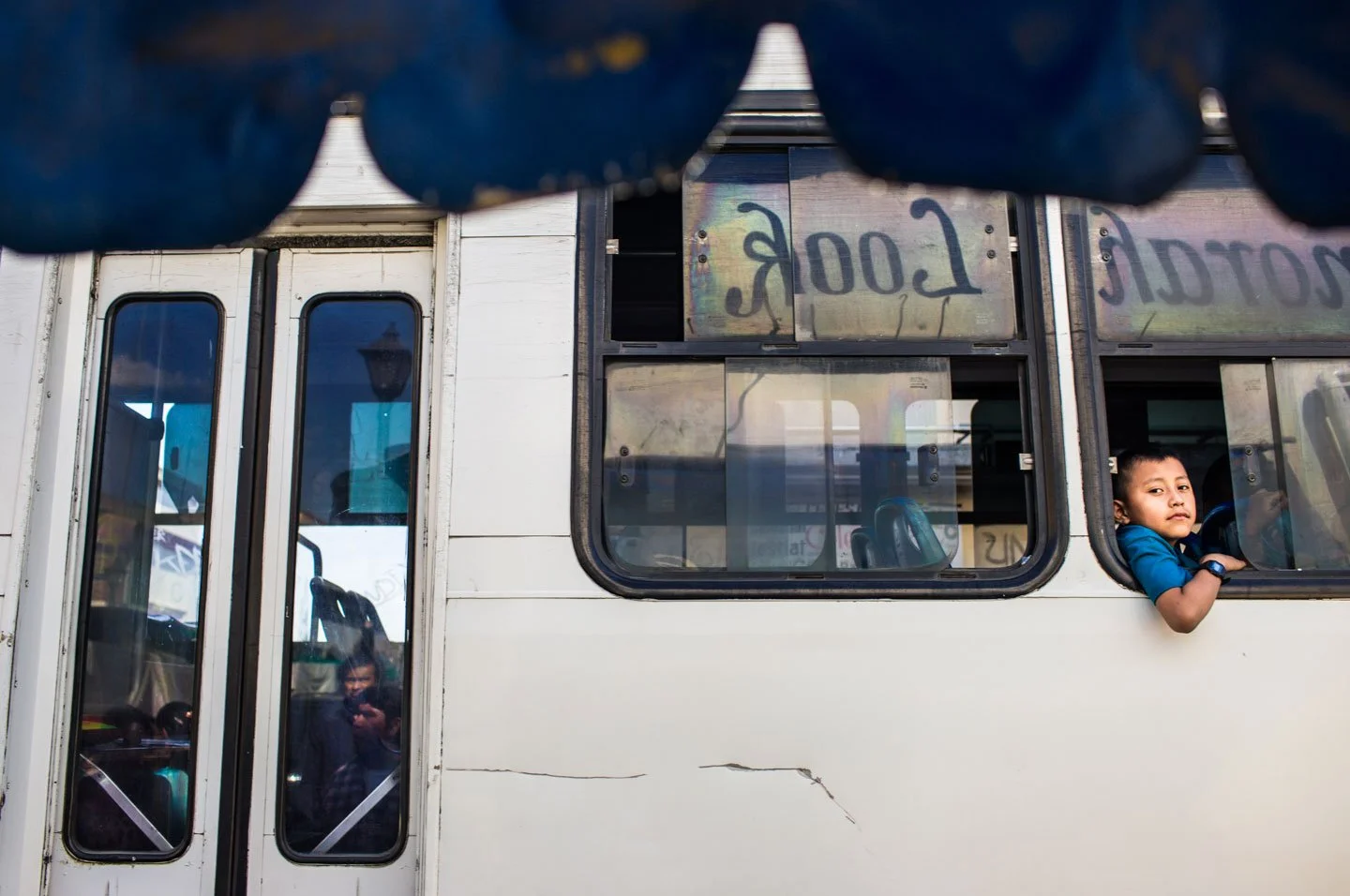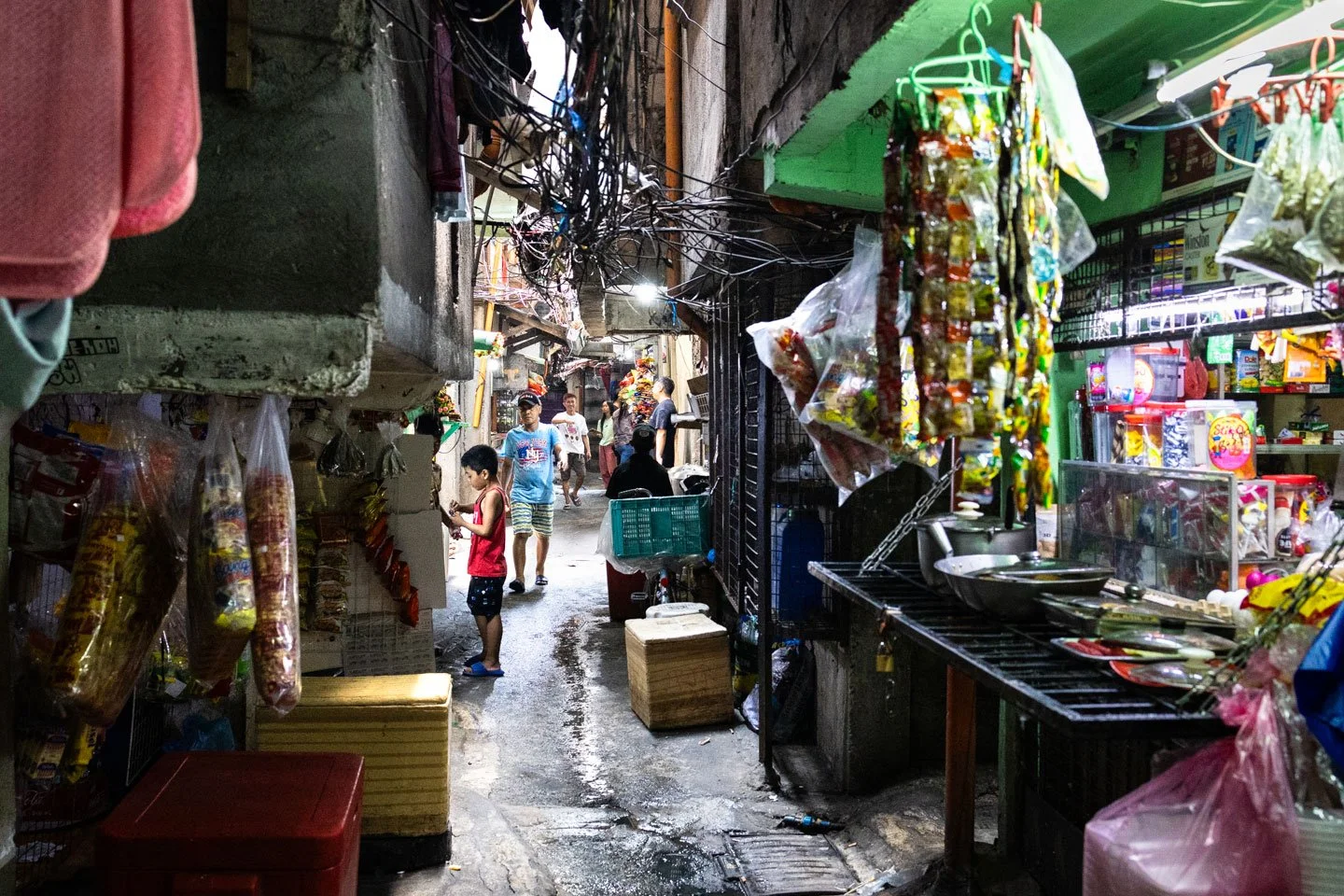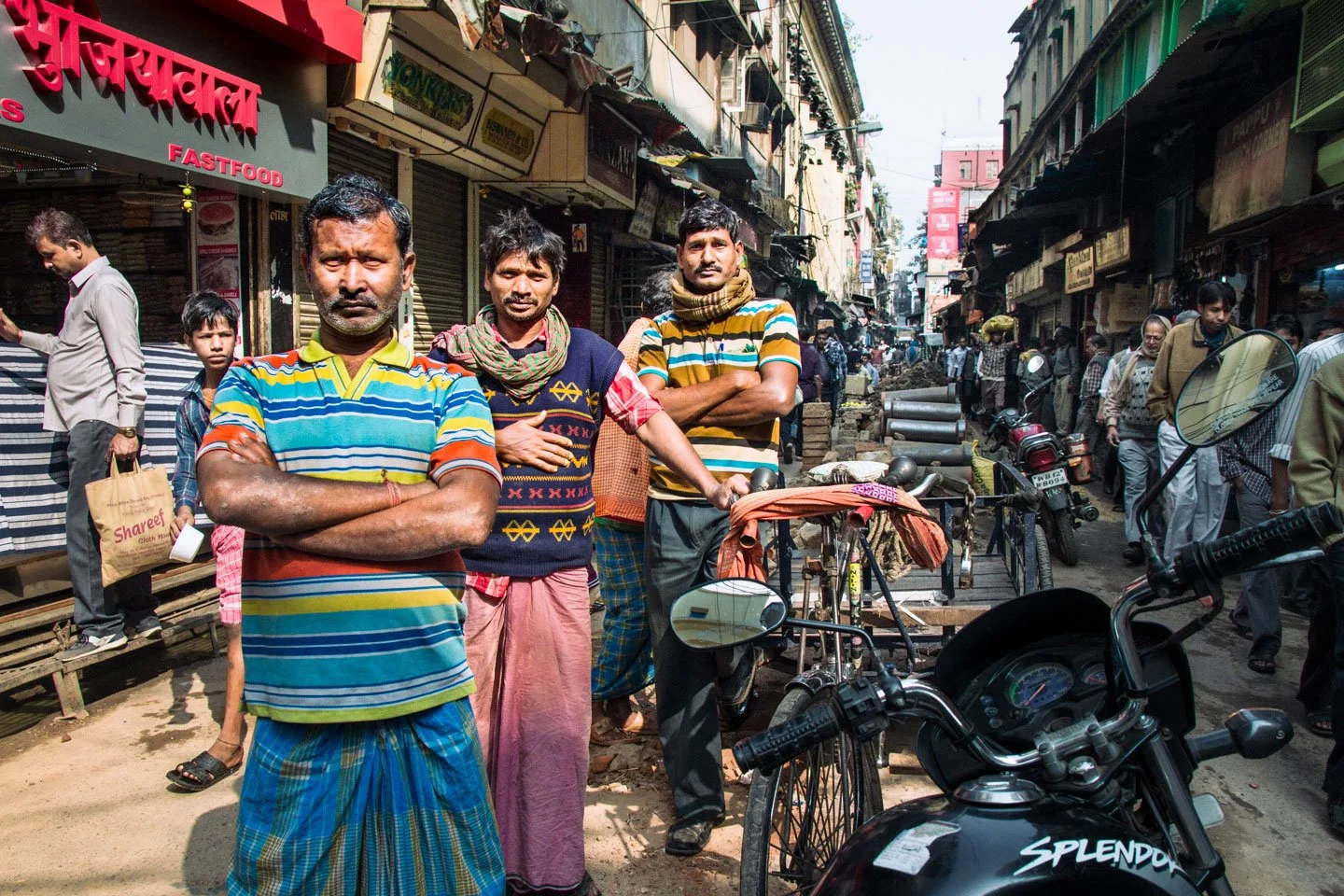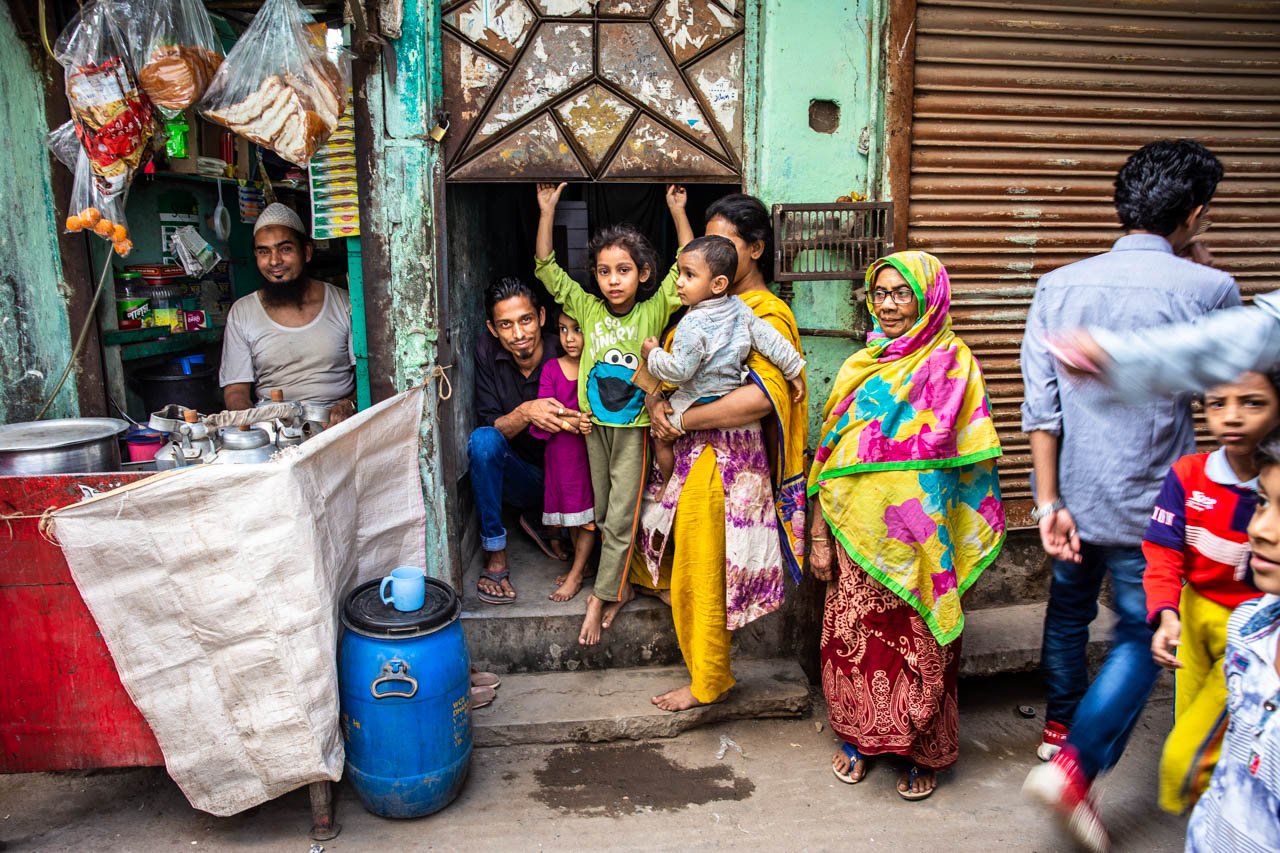Street Life
There’s a reason our mothers always told us to play outside. The streets are where the world lives together, out in the open for everyone to see, and with nowhere to hide, even if we tried. (Photos with a ' ' include descriptions.)
— Share this Gallery —
Old Dhaka, Bangladesh
In Old Dhaka everyone is an entrepreneur. Unless you are very well off or very poor you probably own a small shop or workspace, like this man does, and focus your business on a very singular task.
The sheer number of people living and working in this historic inner city is so dense that no matter how simple your business idea — reselling used twine, collecting plastic, or making short-run deliveries on a bicycle cart — there will be more than enough customer demand to keep you busy day after day. Hard work will reward just about any venture you can think of. Enough to make you proud.
Sham Shui Po, Hong Kong
Today is the 23rd of March, the day Article 23 takes effect in Hong Kong. There is otherwise no explanation for why this discarded sofa has been placed here on this street, facing outward as clearly as it does. It will soon be carried away with the morning trash, but until then it is giving this man a window of opportunity he never thought to look for — a chance to take pause before a busy day and enjoy the comfort of breathing room he didn’t know he needed.
This is the first time in decades he’s looked out over the city from such a quiet place of peace, beyond nostalgia for its past and towards a genuine, plausible hope for its future. The morning’s outlook is clear and promising. Things are rarely as bad as they seem. Time is always on your side. He sits back, well aware that his vantage point has an hour at best before it’s hauled away. Just in case it never comes back he intends to cherish every second.
Manila, Philippines
If you catch this jeepney at the corner of Recto and Rizal Avenues it will take you east, past the old Dilson Theatre and along Recto where you can top up your SIM card, get your old analog watch working again, or place an order for the fake documents and diplomas you’re going to need to get ahead in life.
If you continue along Recto you’ll be driving directly under the less affordable and more efficient LRT. It runs suspended above this and other main streets on a concrete overpass that extends nearly the length and width of the city, and with massive three-story station stops all along the way. They hang heavy over intersections and corner stores, blocking any hope of sunlight ever reaching them again.
There are thousands of jeepneys in the city, each independently owned and operated, all with their own unique routes that service every single neighbourhood in the greater Manila area — Quiapo and Tondo and Navotas to name a few. They will all veer off the main streets at some point and travel down narrow roads to even the most remote communities regardless of how isolated or impoverished or forgotten.
The foresight of it all is quite remarkable. Manila has grown to over 28 million people and into a sprawling, chaotic concrete city that can be difficult to survive in let alone thrive. But no matter where in Manila you may live or how hard it gets to live here, there’s always someone who will take you home.
Vĩnh Long,, Vietnam
Oaxaca, Mexico
Kowloon, Hong Kong
Saigon, Vietnam
It may look like everyone in Saigon is always working late, but for most of them their store or restaurant or even workshop like this one is actually the front of their house, and when the streets are quiet and the air is cool this might just be the most comfortable place to spend the evening.
Metro Manila, Philippines
Gaziantep, Türkiye
The rugged terrain and unique motorcycle culture of Gaziantep city have given rise to a small group of lone, rogue bikers who make their living on their bikes, collecting recyclables from garbage bins and city dumps to then sell by weight at the recycling depot.
In other cities throughout Türkiye this is usually done by foot. Men and women wheel a cart up and down the streets, collecting only one of the many types of recyclables out there. But here in Gaziantep, these men, maybe ten or fifteen of them in total, have modified their motorcycle sidecars to be able to carry every type of recyclable they can find. They ride through the city day or night, covering as much ground as they can to earn as much money as they need.
You may not see it in this photograph, but this man, and the other collectors like him, are the stars of this city. They work for themselves and answer to no one; they love their bikes and the feeling of riding free through the city streets; and they’re able make a living without having to change their way of life or give up who they are. Not one bit.
Kolkata, India
Dhaka, Bangladesh
Kowloon, Hong Kong
Dhaka, Bangladesh
This photograph was taken on February 11th, 2020, weeks before the pandemic arrived in Bangladesh, bringing with it fear and panic to these very streets. This is otherwise an ordinary photograph of an ordinary day, but in the weeks and months of the pandemic, while the nation and its people lived in lockdown and isolation, it felt like the most beautiful photograph of the most wonderful day.
Tomorrow, whatever it was that felt so special about this day will become like a secret, hidden from all of us. It will all be ordinary again, just as it should. The photograph will be easily forgotten, and the day will feel so uneventful that it will seem like every other day of life.
Oaxaca, Mexico
Sheki, Azerbaijan
The number 15 minibus leaves every hour on the hour from the bottom of the hill in the village of Kiş and will take you right into the main bazaar in the city of Sheki just 8 kilometers away. If you live in Kiş, or any of the small villages scattered along these western slopes of the Caucasus Mountains, the Sheki bazaar is where you will go to shop for groceries or buy new clothes or just enjoy a fresh, hot peroşkis while visiting friends.
And the first things you will learn when you arrive in Azerbaijan are just this simple: a minibus is the best way to get around, and the nearest bazaar to wherever you are is the best place to be.
Manila, Philippines
Just off of Quezon Boulevard is a narrow road and the only vehicle access to Barangay 310. “Barangay” is Filipino for the Spanish word “barrio” and refers to the smallest community area with its own administrative representative. Barangay 310 has a population of 15,000 people and is the neighbourhood that surrounds and incorporates the Manila City Jail.
Though the west side of the road is the long wall of the jail with visitor access entrances to the male and female dormitories, Barangay 310 is defined by more than just the hard life that surrounds it, it’s also a neighbourhood of growing families. There’s a small schoolhouse and a community playground, at the end of the road is a very active administrative building that’s known to everyone as the livelihood center, and there’s easily five or six nice places to get a meal. Bicol’s Best Eatery not only has the widest variety of dishes but it’s the only eatery with a dine-in option.
Quiché, Guatemala
Here in the midwestern highlands of Guatemala an indigenous, Mayan family sits on the corner outside the Hermanos de la Buena Esperanza office. They are not waiting for the office to open, they’re just waiting for a ride. This is a common but unofficial pick-up and drop-off corner for rides throughout the Quiché area.
— Share this Gallery —
















